Do you want to create a system that can run off of solar panels and a gas generator? It’s entirely possible. Although it’s not one device, you can make an excellent dual solar and gas generator. And this article will help you figure it out.
By using the benefits of solar panels and gas generators together, you can create an efficient and reliable power system. This hybrid approach uses the strengths of both sources for continuous, dependable power.
Let’s explore how you can set up a dual solar and gas generator to optimize your electrical supply.
We carefully select the products and services we link to. If you buy through our links, we may earn a commission. There’s no extra cost to you and it helps us provide this information.

Benefits of Solar and Gas
When it comes to energy sources, it’s impossible to find one without flaws. The way to balance this is to use two sources that complement one another, like solar and gas.
Solar is an excellent way to create energy. After initial investment and installation, a solar panel array pumps out continuous energy that can be used to power small devices or run entire homes. The catch is that it doesn’t create energy when the sun doesn’t shine. And the charging rates can be on the slower side.
On the other hand, gas generators (including gasoline, propane gas, and even diesel generators) have essentially the exact opposite approach.
You can buy a fuel generator for a fairly low price and they come with minimal installation needs. But they require a significant amount of fuel and maintenance. In exchange for that dino juice, gasoline (as well as diesel or propane) generators can crank out a lot of electricity in a little time.
These two, solar and gas, fit together like peanut butter and jelly. Solar can be relied on for a constant energy supply but may encounter issues with stormy weather or energy-hungry devices. When solar doesn’t produce enough, flick on the gas generator to get a quick burst of energy.
It sounds like an ideal setup. And it is, especially if you have the right equipment.
An ideal way to accomplish this is with the EcoFlow Delta Pro 3 and EcoFlow 4000W Dual Fuel Generator.

The Equipment
There are many ways to create a solar and gas generator. In this section, we’ll review the most convenient method before diving into other options.
Solar Generator and Fuel Generator
Innovative solar generators are bringing a new level of energy independence. One where you can have a complete power system wherever you want. A solar generator includes a portable power station and a set of solar panels.
Inside the power station is everything necessary to use solar power to its fullest. All of the equipment to absorb, store, and provide the electricity is within one little box. This includes a charge controller, battery system, AC inverter, and all right controls, fuses, and cutoffs to make this little box of magic run.
But it gets even better.
Since power stations have multiple charging inputs, you can also use them with a fuel generator. This means you can connect a gasoline generator, propane generator, diesel generator, or any dual fuel combination you want.
EcoFlow has one of the best inter-device setups to create the solar and gas generator of your dreams. Click here to jump down to the section describing exactly how to use a solar and gas generator with EcoFlow products. Or head over to our other article to see the latest and greatest versions of the Delta Pro 3 and Dual Fuel Generator.

|
EcoFlow DELTA Pro |
DP on EcoFlow DP on Amazon |
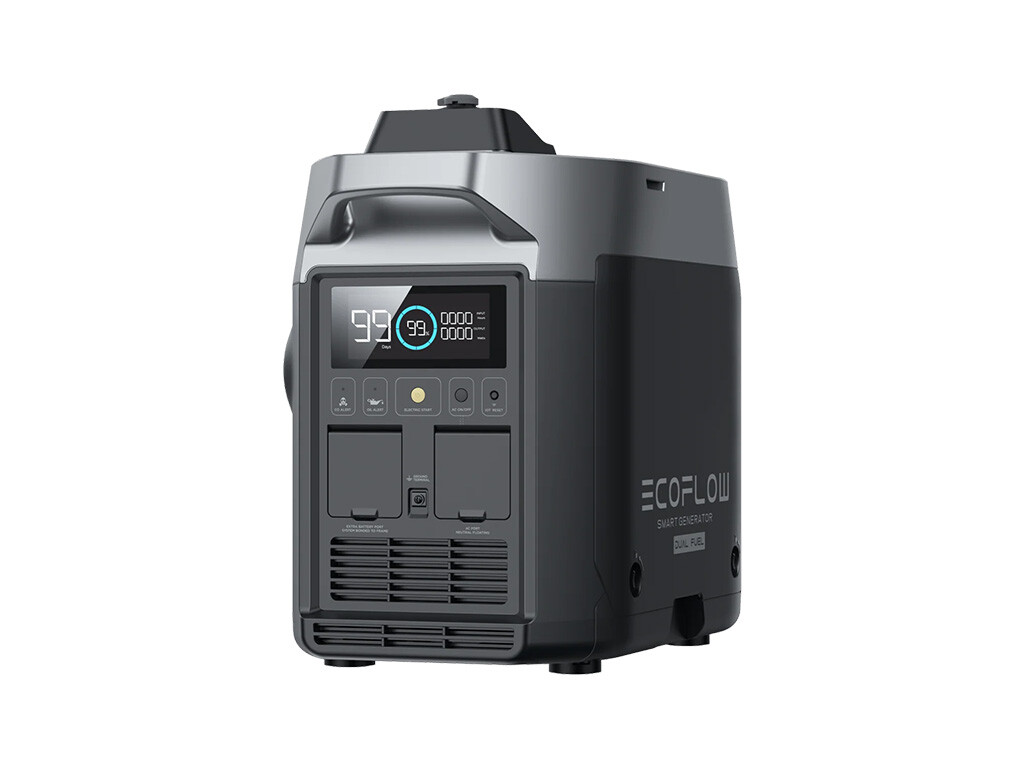
|
EcoFlow Dual Fuel Smart Generator |
DFSG on EcoFlow DFSG on Amazon |
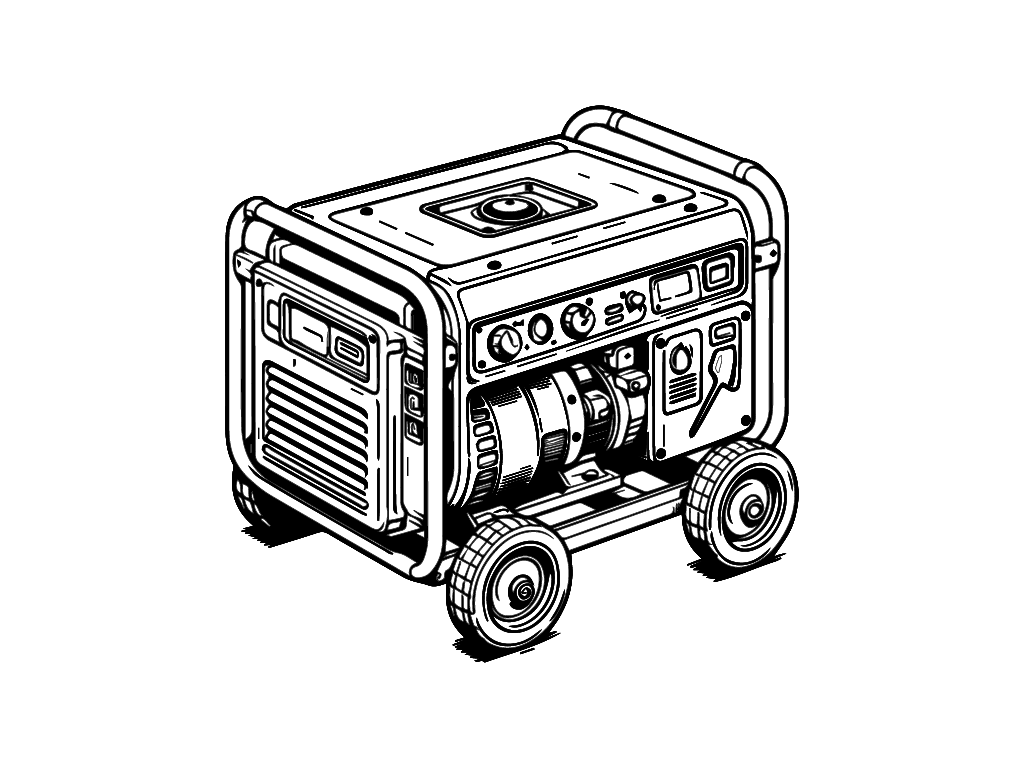
Traditional Solar Setup With a Generator
The other option is to use a more traditional home solar setup and a separate fuel generator. This can still use both power supplies to run your home, but in a divided approach.
This setup usually integrates solar with your grid-supplied circuits, then adds the fuel generator as a backup for limited circuits.
Many household solar systems do not have a battery. They simply connect the solar panel array to a charger/inverter that sends the energy from the solar panels to your home circuits. This means it:
- Pro: Costs less than a battery setup
- Pro: Can often sell excess solar energy back to utility supplier
- Con: Can’t absorb solar energy for later use
- Con: Must use grid or fuel generator when sun isn’t shining
A fuel generator can be connected to your household circuits through a generator inlet (with an interlock device) or through a transfer switch. When your solar or grid sources aren’t around, you can flip over to the backup generator.
However, your energy supply will be limited to whatever the generator can supply at one time. And since it lacks a battery system for energy storage, you must run the generator at all times when trying to use it. If you have a battery system (or power station with a battery), you can cycle the generator on and off to charge up the battery then use silent energy from the battery.
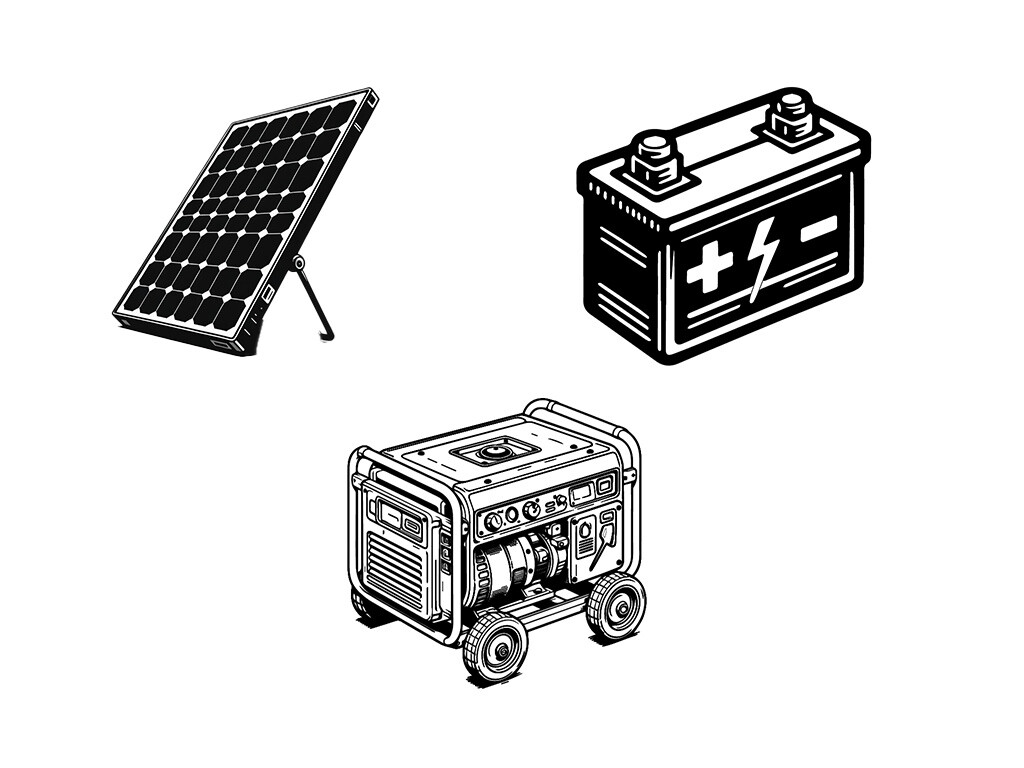
Solar, Battery, and Generator
The final option to make a solar and gas generator is to create a battery system that can use both solar and a fuel generator as an input. Essentially, this means you’ll be creating your own power station from scratch, then using the power sources you desire.
- Pro: Highly customizable approach to match your specific needs
- Pro: Can sometimes result in money savings
- Con: Many individual components must be selected and installed
- Con: Lacks a warranty covering the entire system and has no dedicated support team
This is a great project for those that really want to dive deep into their electrical setup. For many people, it’s a little too much to bite off. And since it’s a highly customized system, it means that problems can be very difficult to deal with.
The main components to consider are:
- Solar panel array: Decide how many solar panels you need to generate electricity.
- Solar charging system: Use a charge controller to absorb the solar panel energy and transfer it to the battery.
- Generator charging system: Another input for the battery system that connects to high-amp output of an inverter generator.
- Battery monitoring: A system to confirm how much energy is flowing in and out and what the current state of charge is, at a minimum.
- AC inverter: If you are powering a home or have any AC-only devices, you must get a power inverter with an adequate rating.
- DC circuit panel: If you want to avoid power loss from an inverter and use DC devices directly, you will need to connect your battery to a DC distribution box.
- Fuses, wiring, cutoffs, and other safety equipment: All of the proper safety devices to make sure problems don’t occur.
It is possible to create this system to use as a dual solar and gas generator. But it’s fairly complex. There are some products which combine a few of these, including the solar charge controller and inverter, but you’ll still need to wire your battery system and monitor it separately.
Overall, when compared to power stations like those from EcoFlow, Bluetti, or Anker, this is a much more cumbersome way to create your home power system. It also does not come with a unified warranty and knowledgeable support staff. Instead, you’ll be relying on a combination of devices and an expert-level installation that can be very tough and expensive to troubleshoot.
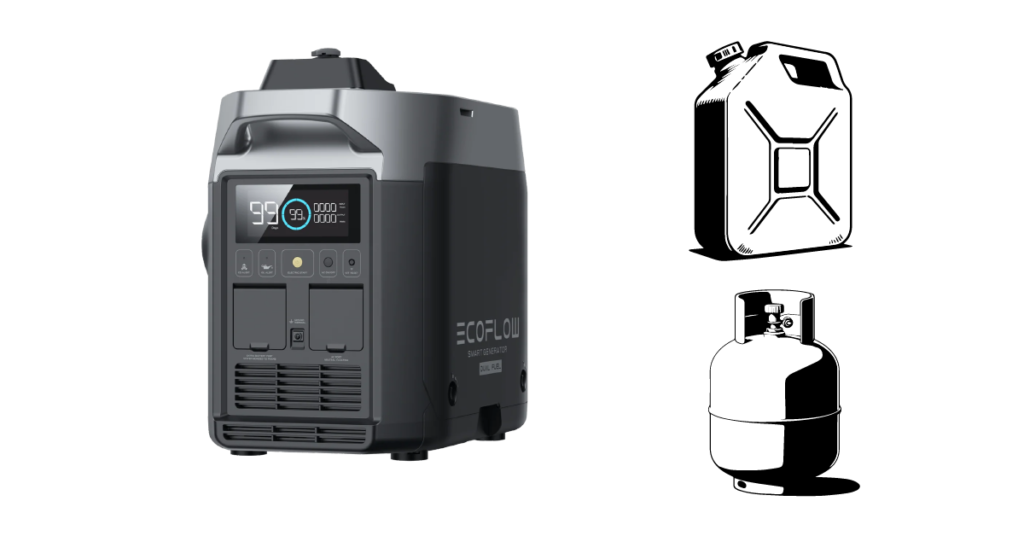
Dual Solar and Gas Generator
By using a solar generator with a gas generator, you get the dual input combination that can be a flawless way to provide non-stop energy. There are many options to consider, so here are some of the top ones.
EcoFlow Generators
As an industry-leader in the world of solar generators, EcoFlow power stations are some of the best you can find. But if you want to add in a gas generator, there’s simply no competing with EcoFlow’s lineup.
The secret is the EcoFlow Dual Fuel Smart Generator. This is a fuel generator that can use gasoline or propane. And it pairs extremely well with many EcoFlow solar generators, especially the Delta Pro. With this combination of a dual solar and fuel generator, you can have non-stop electricity that will come from solar whenever possible but has propane or gas generator as a backup power source.
What makes this combination so unique is that this is a smart generator. It automatically monitors the battery level of the solar generator, and can turn on the gas generator as needed. You can also control and start it from an app.
And there’s a more-powerful version coming out soon, the 4000W EcoFlow Dual Fuel Smart Generator.
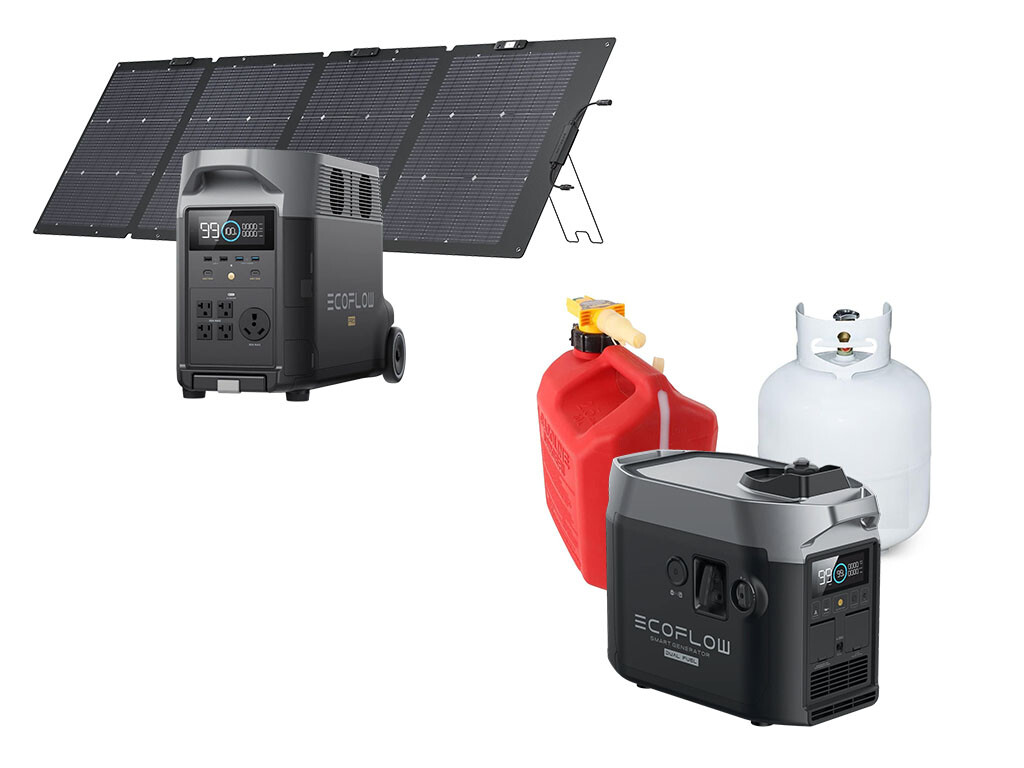
The EcoFlow fuel generator comes with some truly impressive features:
- Pull start and electric start functions
- Automatic mode to start/stop as needed to provide energy
- App control and monitoring through WiFi and Bluetooth connections
- DC output to reduce energy loss from AC inverter
- AC inverter and DC outlets for times when you want to use the generator without another device
When you pair this dual fuel generator with an EcoFlow solar generator like the Delta Pro or Delta Pro 3, you get a flawless energy system that serves as a dual solar and gas generator.
If you connect the Delta Pro to a transfer switch and critical loads panel, you can create an excellent home backup source. It can also be used to power an off-grid home or RV.

|
EcoFlow DELTA Pro |
DP on EcoFlow DP on Amazon |

|
EcoFlow Dual Fuel Smart Generator |
DFSG on EcoFlow DFSG on Amazon |
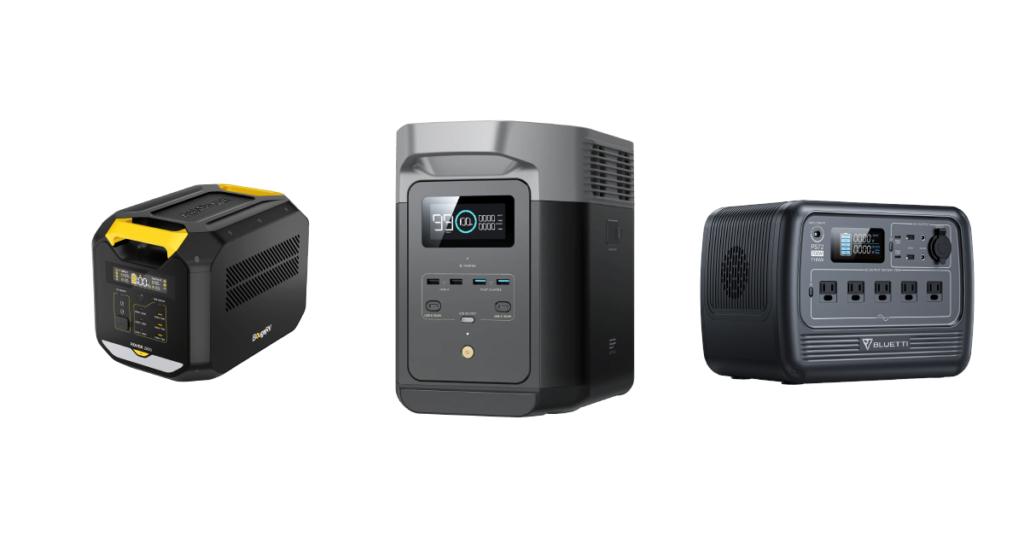
Other Power Stations and Inverter Generators
You don’t have to use EcoFlow to get the benefits of a solar generator with a gas generator. It just won’t offer the same level of convenience.
Basically every power station has multiple inputs to accept different charging sources. They usually use AC charging from a wall outlet and DC charging from solar panels (or a car alternator). But you can also use the AC input to accept a fuel generator as a power source.
The catch is that the fuel generator needs to be an inverter generator, meaning that it can provide a suitable AC power source. It essentially takes the place of a wall outlet.
And since power stations and solar generators are sophisticated electronics, you want to look for a fuel inverter generator that uses a pure sine wave rather than modified sine wave (or at least one that offers “clean” output, which is a modified sine wave with less disruption). Pure sine is a cleaner, more reliable form of AC energy.
Once you have the right fuel generator and a solar generator to go with it, you can use both solar and gas power anywhere you want.
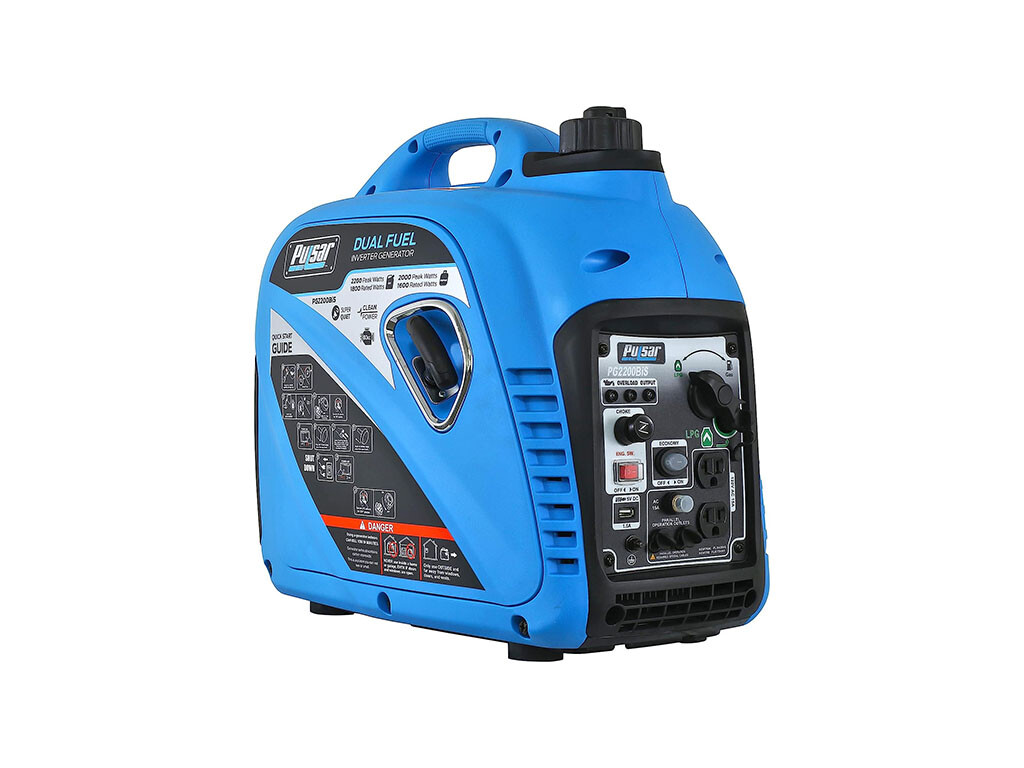
Dual Fuel Gas Generators
One more product that’s worth knowing about is the dual fuel gas generators. These can accept two different types of fuel to power the generator. It is usually a liquid fuel, like gasoline, and a gas fuel, like propane. But they can also be made to use diesel or natural gas as well.
The EcoFlow Dual Fuel Smart Generator is a version of this. It has a built-in gasoline tank that can power the generator to create electricity. And it also has a propane connection, so you can connect any propane tank to it and run the generator with that fuel instead.
There are also bi-fuel generators, which are different from dual fuel generators. Although some brands don’t stick to the technical definition, it’s usually that dual fuel generators can use multiple fuels at the same time (like gasoline to start and then gradually switch to a combination of gasoline and natural gas to reduce gasoline consumption), while bi-fuel generators can use one fuel or another, sticking to only one fuel source at a time. But as we’ve seen with the EcoFlow Dual Fuel, it is actually a bi-fuel generator by this definition. It’s important to review the specific product to see how it works.
You don’t have to use a dual fuel generator to create a dual solar and gas generator. This is actually a combination of two products: a solar generator (power station with solar panels) and a fuel generator.
Wrap Up: Dual Solar and Gas Generator
If you want to combine the best of low-maintenance solar energy with high-powered gas generators, it’s never been easier. Get a solar generator and use a fuel generator to charge it when your solar panels don’t provide enough energy. The EcoFlow Delta Pro and EcoFlow Dual Fuel Smart Generator is an ideal combination, but there are many ways to make this happen.
Ready to learn more about solar power? Check out our post on How to Use Solar at Night. Or head over to our post on the EcoFlow Dual Fuel Smart Generator or the updated Delta Pro 3 with 4000W Dual Fuel Generator to see what’s right for you.







